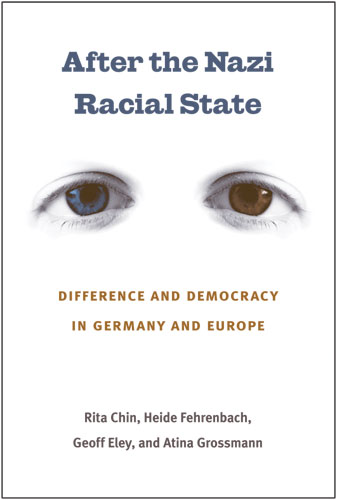The Black Irish Onscreen: Representing Black and Mixed-Race Identities on Irish Film and TelevisionPosted in Books, Communications/Media Studies, Europe, Media Archive, Monographs on 2013-08-23 20:34Z by Steven |
The Black Irish Onscreen: Representing Black and Mixed-Race Identities on Irish Film and Television
Peter Lang Publishing
Reimagining Ireland. Volume 16
2013
203 pages
5 black and white illustrations
Paperback ISBN: 978-3-0343-0839-7
DOI: 10.3726/978-3-0353-0507-4
Zélie Asava, Lecturer and Programme Director of Video and Film
Dundalk Institute of Technology, Louth, Ireland
This book examines the position of black and mixed-race characters in Irish film culture. By exploring key film and television productions from the 1990s to the present day, the author uncovers and interrogates concepts of Irish identity, history and nation.
In 2009, Ireland had the highest birth rate in Europe, with almost 24 per cent of births attributed to the ‘new Irish’. By 2013, 17 per cent of the nation was foreign-born. Ireland has always been a culturally diverse space and has produced a series of high-profile mixed-race stars, including Phil Lynott, Ruth Negga, and Simon Zebo, among others. Through an analysis of screen visualizations of the black Irish, this study uncovers forgotten histories, challenges the perceived homogeneity of the nation, evaluates integration, and considers the future of the new Ireland. It makes a creative and significant theoretical contribution to scholarly work on the relationship between representation and identity in Irish cinema.
This book was the winner of the 2011 Peter Lang Young Scholars Competition in Irish Studies.
Contents
- Acknowledgements
- Introduction: Positioning the Black Irish: Theoretical, Historical and Visual Contexts
- Chapter One: ‘No Blacks, No Dogs, No Irish’: Being Black and Irish in Neil Jordan’s The Crying Game (1992) and Breakfast on Pluto (2005)
- Chapter Two: Gendering the Other: Raced Women in Irish Television (Prosperity (RTE, 2007), Love is The Drug (RTE, 2004) and Fair City (RTE, 1989–present))
- Chapter Three: New Identities in the Irish Horror Film: Isolation (O’Brien, 2005) and Boy Eats Girl (Bradley, 2005)
- Chapter Four: Black and Mixed Masculinities in Irish Cinema: The Nephew (Brady, 1998), Irish Jam (Eyres, 2006) and The Front Line (Gleeson, 2006)
- Chapter Five: Thrill Me, Kiss Me, Kill Me: Trafficked (O’Connor, 2010) and the Multicultural Irish Thriller
- Chapter Six: The Raced Stranger in Contemporary Cinema: Between the Canals (O’Connor, 2011), Sensation (Hall, 2010), The Good Man (Harrison, 2012) and The Guard (McDonagh, 2011)
- Conclusion
- Framing the Future of the Black Irish Onscreen
- Bibliography
- Index





